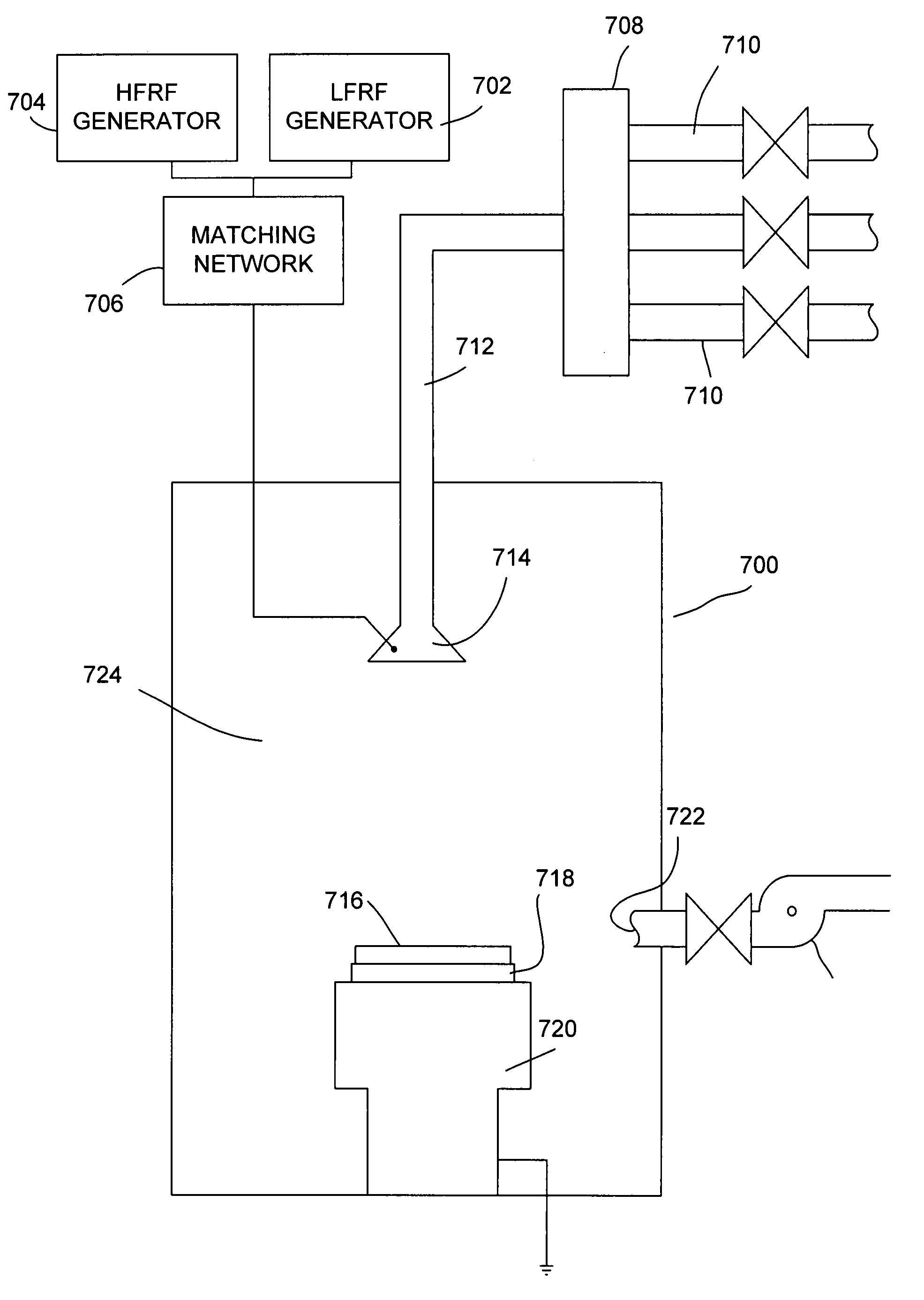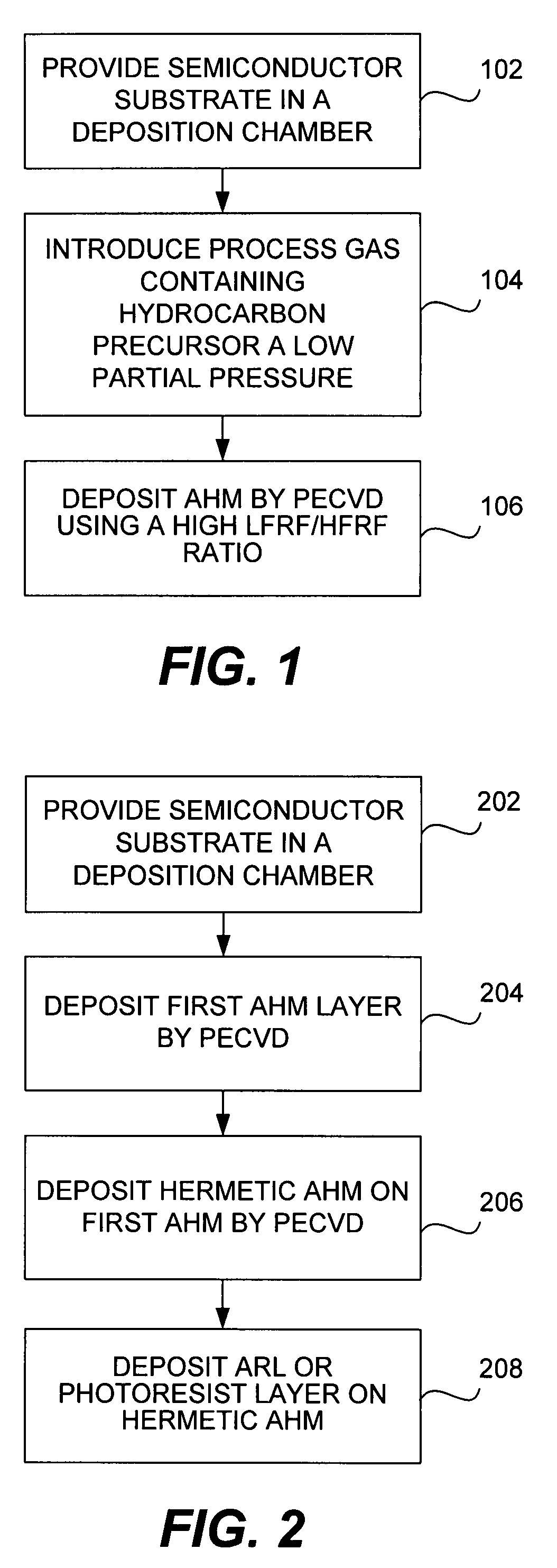Methods of depositing stable and hermetic ashable hardmask films
a technology of hard mask and stable ash, applied in the field of new mask production methods, can solve the problems of film blistering, difficult integration, moisture penetrating into an ahm, etc., and achieve the effect of low extinction coefficient and highly selectiv
- Summary
- Abstract
- Description
- Claims
- Application Information
AI Technical Summary
Benefits of technology
Problems solved by technology
Method used
Image
Examples
example 1
[0044]AHMs of varying thicknesses were deposited on 10 kA tensile-TEOS wafers using process conditions indicated below. Stress shift after 3 days exposure to atmosphere was measured. Results are as below:
[0045]
TensileC2H2 PartialTEOSThicknessPressureTemperatureLF / HFstress shift(Angstroms)(torr)(C.)Ratio(MPa)7500.12503 / 187500.22503 / 111500.22503 / 14 750.22503 / 177500.32503 / 1667500.62503 / 11257502.54001.33 / 1 166Tensile150TEOSwithout AHM
Films deposited at partial pressures of 0.2 torr and lower showed stress shifts of less than 10 MPa. As can be seen from the table, a very thin AHM (e.g., 75 Angstroms or less) may be used to prevent moisture from the underlying tensile TEOS film. Such thin films may be used in combination with a thick AHM film having tunable optical properties as described above.
example 2
Film Characterization
[0046]FIGS. 6A and 6B are FTIR spectra showing CHx and C═C peaks of AHMs A, B, C and D, deposited using the following conditions:
[0047]
AHMC2H2 PartialdepositionPressureTemperatureLF / HFcondition(torr)(C.)RatioA2.54001.33 / 1 B0.62503 / 1C0.32503 / 1D0.22503 / 1
Hermetic films are densely packed, which reduces the extent of stretching and bending of CHx bonds. FIG. 6A shows the CHx stretching vibration between 2800-3100 cm−1 at around 2900 cm−1 for these films. Film D has a FTIR peak of approximately half that of film A. (As can be seen from Example 1, AHMs deposited at conditions of D have very good hermeticity, while AHMs deposited at conditions of film A have poor hermeticity.) As hermetic films are SP3 rich, the C═C stretch decreases for hermetic films. FIG. 6B shows a C═C and two CHx bending peaks at around 1600, 1450 & 1350 cm−1, respectively. As can be seen, these peaks are smaller for films with good hermeticity.
[0048]In certain embodiments, the hermetic AHMs have...
PUM
| Property | Measurement | Unit |
|---|---|---|
| pressure | aaaaa | aaaaa |
| pressure | aaaaa | aaaaa |
| partial pressure | aaaaa | aaaaa |
Abstract
Description
Claims
Application Information
 Login to View More
Login to View More - R&D
- Intellectual Property
- Life Sciences
- Materials
- Tech Scout
- Unparalleled Data Quality
- Higher Quality Content
- 60% Fewer Hallucinations
Browse by: Latest US Patents, China's latest patents, Technical Efficacy Thesaurus, Application Domain, Technology Topic, Popular Technical Reports.
© 2025 PatSnap. All rights reserved.Legal|Privacy policy|Modern Slavery Act Transparency Statement|Sitemap|About US| Contact US: help@patsnap.com



